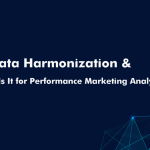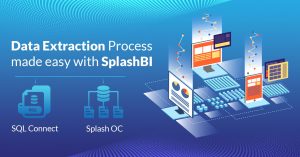
Big Data Analytics uses advanced analytical techniques against massive, diverse datasets from different sources that contain structured, semi–structured, and unstructured data of varying sizes, from terabytes to zettabytes. Big Data has one or more characteristics: High Volume, High Velocity, or High Diversity.
For example, in Big data, The majority comes from sensors, devices, video/audio, networks, log files, transactional applications, the web, and social media, rendered in real–time and at a massive scale.
Analysis of Big Data enables analysts, researchers, and business users to make better and faster decisions using previously inaccessible or unavailable data.
Big Data Analytics is a subset of Business Intelligence (BI) that uses advanced analytical techniques to process large amounts of rich data of varying sizes, structured, semi–structured, or unstructured, from different sources. Big Data Analytics Tools collect data from various sources, such as social media, the web, and databases, and perform detailed analyses on this large–scale data to reveal patterns and patterns within it. The most important difference between Big Data Analytics and Business Analytics is the size of the data in terms of volume and the analytical techniques applied to these data.
These Big Data Analytics tools often require advanced knowledge of data analytics techniques, and technologies like cloud–based analytics are also used. Big Data Analytics takes collected data and presents it in meaningful ways using visualizations and required tables. Well–presented data can give decision–makers and managers the information and guidance they need before deciding on any issue.
These types of software typically use four types of analytics to help build and uncover insights:
1) Predictive Analytics
2) Normative Analytics
3) Diagnostic Analytics
4) Descriptive Analytics
The Importance of Big Data Analytics
Your customers generate copious amounts of data every day; enter your store and shop online. Big Data Analytics tools collect this data and analyze it in ways beneficial to your organization.
Analyzing more data more quickly can bring considerable benefits to an organization. It allows more efficient use of data to make critical decisions or detect problems.
Big Data Analytics will enable organizations to use large amounts of data from multiple sources in multiple ways to identify opportunities and risks, helping them act quickly and improve their bottom line.
Organizations can use extensive data analytics systems and software to make some business decisions quickly and accurately. Big Data Analytics can help with more effective marketing, new revenue opportunities, customer personalization, and improved operational efficiency. These benefits can provide significant advantages over competitors with an effective strategy.
Organizations of all sizes can use and benefit from Big Data. You can leverage the benefits of Big Data Analytics to increase your organization’s efficiency, grow your bottom line, and power new business models.
1) Reduces Costs:
Big Data Analytics helps users reduce costs in their businesses. Hadoop and cloud–based analytics systems provide cheap and efficient ways to store users’ data. With the data and insights you obtain, you can quickly identify your business’s low and high–performing aspects.
For example, let’s say that in your e–commerce site, your advertising and marketing unit runs very successful campaigns and directs many potential customers to your area. Still, you cannot make the necessary sales. By using Big Data Analytics, you can research what factors cause you to lose sales and take the necessary measures.
For example, maybe your checkout page is not well optimized; your site is not fast enough. In this case, you can quickly take the necessary actions to solve the problem.
2) Allows you to analyze trends:
Predicting trends and analyzing behaviour are essential features of Big Data Analytics. Based on historical data, Big Data Analytics will try to make predictions for the following periods and price fluctuations, different consumer behaviors, and brand interactions that may affect the results.
3) Allows you to share insights easily:
It lets you quickly share visualized and tabulated insights with others in your organization. Tables are dynamically updated, and interactive windows are transformed into raw data. Tables are primarily tailored for specific use cases, such as marketing, sales, or management. Visualizations help tell the story of the data by communicating in efficient and meaningful ways.
4) Allows you to make quick decisions:
Thanks to the extensive data’s detailed and rapid availability, users can make critical decisions more quickly.
5) Optimize your business performance:
There are significant benefits to seeing all aspects of your business in a general context. In this way, you can quickly diagnose your work or processes’ problematic points or deficiencies and take the necessary measures.
Most Big Data Analytics systems will help provide some diagnostic information, such as supporting factors or associated data points.
6) It allows you to manage your data correctly:
Data management is a critical feature of big data. Controlling data flow is a crucial issue due to legal regulations such as the General Data Protection Regulation. Data quality management includes cleaning, collecting, distributing, and contextualizing data.
The 3 Vs of Big Data Analysis
It is the concept of 3V, which derives from the English words Variety, Velocity, and Volume, which are the three characteristic features of Big Data. They help us better understand Big Data.
Variety: In Big Data variety helps get more complete answers in the queries made. Because data can be compiled from different formats, from text documents to emails, numerical data to videos, audios, and financial transactions.
Velocity: It refers to the real–time data creation speed. More broadly, it includes the rate of change, connecting incoming datasets at varying rates, and bursts of activity.
Volume: As the name suggests, we know that big Data is an enormous information set created daily. These resources can be social media, business processes, machines, networks, or human interactions.
How Should the Big Data Analysis Process Be?
For many businesses using Big Data, accessing information is not a problem. The main point is to analyze the data and create value. Here are five steps to follow in this process to improve your Data Analysis performance and make the right decisions:
Define Your Questions: You should always start data analysis with the right questions. Questions should be measurable, clear, and short. In addition, the questions you ask should be specific to a particular problem or opportunity.
Set Your Measurement Priorities: Decide what you will measure and how. You should know in advance what qualities you will measure in the answers to the questions you ask.
Data Collection: Now that you have clearly defined questions and measurement priorities, you can start collecting and organizing your data. First, look at what can be gathered from existing databases. Next, create a file storage and naming system to save time and avoid data duplication. Finally, log the data you have collected with the dates.
Analyze the Data: After this stage, you will draw conclusions and inferences by manipulating the data you have collected. Analysis of trends, correlations, variations, and outliers will get you where you want to be.
Interpret Results: As you begin to interpret, you should ask yourself these key questions: Does the data answer the questions? Does the data help you defend an answer against any objections? How?

















